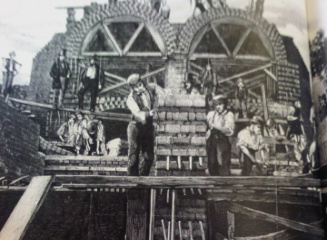 |
| Rock Island vises 1917 |
Rock Island Manufacturing Co., located in Rock Island, IL, was organized in 1906 by Frank G. Young, C.J. Larkin, and Carl E. Shields. Rock Island's products included vises for machine shop and foundry use, power grinders, grist grinders, stock waterers, and cement tools. Rock Island took over the vise business of Jacobson Machine Manufacturing Co., Warren, PA, giving them a start in the business. By 1913, their principals were Carl E. Shields, President, S.E. Hamilton, Superintendent, and Oscar J. Shields, Special Representative. Rock Island's 1914 cement tools catalog and catalog with vises and other tools are available on
Archive.org.
In 1918, Rock Island purchased the Arrowsmith Concrete Tool Co. of Arrowsmith, IL., and began making their walking jointer and edger in Rock Island. The swivel-jointed edger pictured below is a heavy, high quality tool. The wearing surfaces on the bottom and side are carefully ground and nickel plated. The large nut is brass, to prevent it from seizing up.

 |
| Rock Island Arrowsmith edger |
Rock Island's plant was at First St. and Fifteenth Ave., near the Mississippi River. A 1907 stock offering allowed them to build a machine shop 80x150 feet, foundry 70x120 feet, fireproof pattern storage building 30x40 feet, and other buildings. They built another building in 1917. Amazingly, the buildings are still standing, with the business name still visible in faded white paint. The foundry furnace is visible just past this building and behind it.
Birtman Electric Co. of Chicago acquired Rock Island Manufacturing Co. on January 12, 1930. Birtman Electric made vacuum cleaners, irons, toasters, and other household electric products until merging with Whirlpool-Seeger Corp. in 1957. The Rock Island plant continued to make vises and other tools until closing in 1959. The "Michigan Manufacturer and Financial Record", Volumes 103-104, 1959 states, “Production Tool Supply Co., of Warren, Michigan, announces the purchase of the Rock Island Vise Co. The entire inventory of the Illinois firm will be moved to Warren, said D. D. Kahn, Production Tool president.”




















